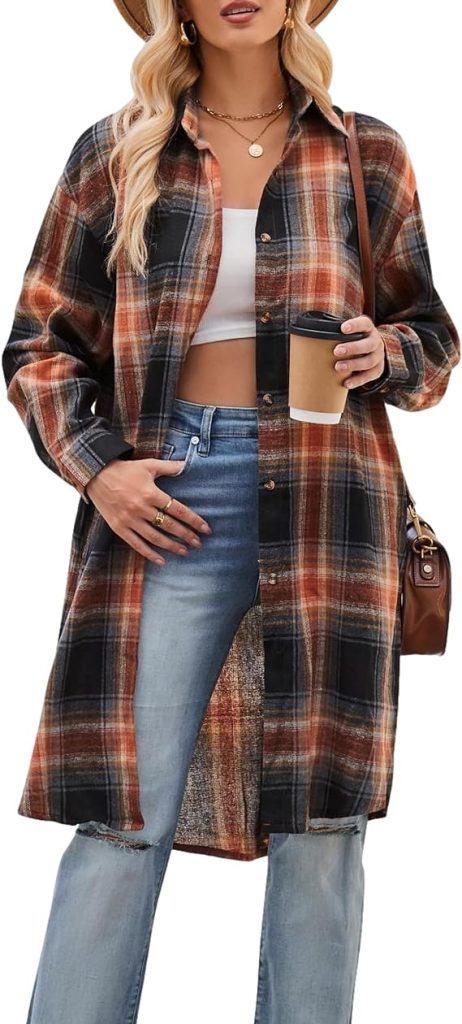Women’s outerwear has undergone a remarkable evolution, transitioning from purely functional garments to fashion statements that reflect personal style and individuality. This article delves into the evolution of women’s outerwear, highlighting the shifts in societal norms, cultural influences, and technological advancements that have shaped the way women dress for the outdoors.
I. The Early Days: From Protection to Modesty
A. Historical Context: Outerwear as a Necessity
In the early days, women’s outerwear primarily served the purpose of protection against the elements. Simple garments like cloaks, capes, and shawls were worn to shield against rain, cold, and wind. The focus was on practicality rather than fashion, with functionality taking precedence over style.

B. Modesty and Social Norms: Outerwear as a Symbol
Outerwear in earlier centuries was also influenced by social norms and ideas of modesty. Women’s outer garments were designed to cover the body, adhering to societal expectations of modesty, particularly for women in higher social classes. The emphasis was on concealing rather than accentuating the figure.
II. The Rise of Fashion: Outerwear as a Style Statement
A. Industrial Revolution and Mass Production
The advent of the Industrial Revolution brought about significant changes in the fashion industry, including the mass production of clothing. This allowed for greater accessibility to fashionable outerwear, as the manufacturing process became more efficient and affordable.
B. Influences of Haute Couture and Ready-to-Wear
The rise of haute couture and ready-to-wear fashion also played a significant role in transforming women’s outerwear. Designers began incorporating elements of style, such as tailored cuts, intricate details, and luxurious fabrics, into outerwear designs. Women’s outerwear became an extension of their personal style, allowing them to make fashion statements while staying warm and protected.

III. The Influence of Cultural and Social Movements
A. The Roaring Twenties: The Dawn of Modernity
The 1920s marked a pivotal moment in the evolution of women’s outerwear, as it coincided with the rise of the flapper style. Women began embracing shorter hemlines, looser silhouettes, and more daring designs. Outerwear, such as the iconic flapper coat, reflected the newfound freedom and liberation of women during this period.
B. The Women’s Liberation Movement: Embracing Individuality
The Women’s Liberation Movement of the 1960s and 1970s encouraged women to break free from traditional gender roles and embrace individuality. This social movement influenced outerwear trends, as women sought garments that allowed them to express their unique personalities and reject societal expectations.

IV. Technological Advancements: Revolutionizing Outerwear
A. Performance Fabrics: Functionality Meets Fashion
Technological advancements in fabric development revolutionized women’s outerwear. The introduction of performance fabrics, such as Gore-Tex and Thinsulate, provided superior protection against the elements while offering breathability and moisture-wicking properties. These fabrics allowed women to stay warm, dry, and comfortable without compromising on style.
B. Innovations in Design: Versatility and Practicality
Designers began incorporating functional elements into women’s outerwear, uch as removable linings, adjustable hoods, and multiple pockets. These innovations allowed women to customize their outerwear to suit different weather conditions and personal preferences. Outerwear became more versatile, adapting to changing needs and providing practical solutions for women on the go.

V. Contemporary Trends: Embracing Diversity and Individuality
A. Street Style Influence: Fashion from the Streets
Contemporary women’s outerwear trends draw inspiration from street style, capturing the diversity and individuality of modern fashion. Designers and fashion enthusiasts alike provide a wealth of inspiration through social media platforms, showcasing a wide range of outerwear styles that reflect personal taste and fashion sensibilities.
B. Sustainable Fashion: Ethical Choices
With an increasing global focus on sustainability, women’s outerwear has seen a rise in ethical and eco-friendly options. Designers are incorporating organic materials, recycled fabrics, and innovative sustainable practices into their collections. Women have the opportunity to make fashion statements while making conscious choices that have a positive impact on the environment.
VI. Breaking Boundaries: Challenging Traditions and Conventions
A. Gender-Neutral and Inclusive Outerwear
The evolution of women’s outerwear is breaking boundaries, challenging traditional gender norms and embracing inclusivity. Gender-neutral designs and inclusive sizing options provide more choices for individuals across the gender spectrum. Outerwear is becoming a platform for self-expression, allowing women and individuals of all genders to dress in ways that align with their true selves.
B. Pushing Fashion Forward: Avant-Garde Designs
Avant-garde designers are pushing the boundaries of women’s outerwear, creating innovative and unconventional designs. These boundary-pushing creations challenge the norms of traditional outerwear and provide opportunities for self-expression and artistic exploration.

Women’s Outerwear as a Reflection of Style and Individuality
Women’s outerwear has come a long way, evolving from purely functional garments to fashion statements that reflect style and individuality. The transformation has been driven by societal changes, technological advancements, and a desire for self-expression. Today, women have a plethora of options to choose from, allowing them to embrace outerwear that combines style, functionality, and personal values. As fashion continues to evolve, women’s outerwear will remain at the forefront of self-expression, reflecting the diverse and ever-changing nature of women’s fashion.

